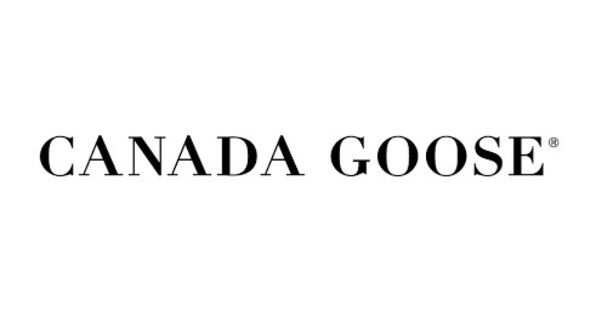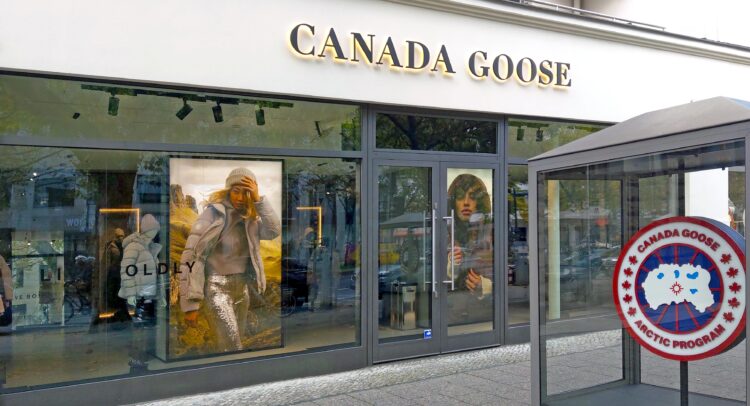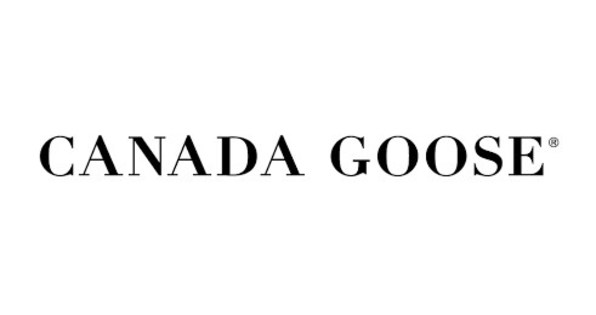Canada Goose Shares Up 9% Following Q4 Results

Canada Goose (NYSE:GOOS) shares rose more than 9% today following the company’s reported Q4 results, with EPS of C$0.04 coming in above the Street estimate of (C$0.01). Revenue was C$223.1 million, slightly missing the Street estimate of C$223.9 million.
The company provided its full 2023-year outlook, expecting revenue of C$1.35 billion at a midpoint, compared to the consensus estimate of C$1.30 billion. EPS is expected to range from C$1.60 to C$1.90.
Although the company said that a return to regular trading levels in Mainland China is a driver of 2023’s fiscal outlook, 4 out of 16 retail stores there remain closed due to COVID. Q4 revenue growth in China was missing from this morning’s press release, which suggests it was likely very weak.
| Symbol | Price | %chg |
|---|---|---|
| POLU.JK | 24800 | 0 |
| ARGO.JK | 1090 | 0 |
| SRIL.JK | 146 | 0 |
| 111770.KS | 58600 | 0 |

Canada Goose Holdings Inc. (GOOS) Earnings Preview: A Strong Value Investment Opportunity
- Canada Goose Holdings Inc. (GOOS) is expected to release its quarterly earnings with an EPS of $0.16 and projected revenue of $355 million.
- The company holds a Zacks Rank of #2 (Buy), indicating strong earnings estimate revision trends compared to Industria de Diseno Textil SA (IDEXY) with a Zacks Rank of #3 (Hold).
- Financial metrics such as a P/E ratio of 16.69, a price-to-sales ratio of 0.92, and an earnings yield of 5.99% suggest Canada Goose may be an undervalued investment.
Canada Goose Holdings Inc. (NYSE:GOOS) is a well-known player in the luxury apparel industry, specializing in high-quality outerwear. The company is set to release its quarterly earnings on Wednesday, May 21, 2025, before the market opens. Analysts expect an earnings per share (EPS) of $0.16 and project revenue to be around $355 million for this period.
Investors in the Retail - Apparel and Shoes sector often compare Canada Goose with Industria de Diseno Textil SA (IDEXY). According to Zacks Investment Research, Canada Goose holds a Zacks Rank of #2 (Buy), indicating strong earnings estimate revision trends. In contrast, IDEXY has a Zacks Rank of #3 (Hold), suggesting that GOOS may be a more favorable investment opportunity.
The Zacks Rank system evaluates stocks based on earnings estimates and revisions, focusing on value, growth, and momentum. Canada Goose's P/E ratio of 16.69 reflects the market's valuation of its earnings, while a price-to-sales ratio of 0.92 suggests a reasonable market value relative to sales. These metrics indicate that Canada Goose may be undervalued, making it an attractive option for value investors.
Canada Goose's financial health is further highlighted by its enterprise value to sales ratio of 1.33 and an enterprise value to operating cash flow ratio of 7.41. These figures provide insight into the company's valuation and cash flow generation. Additionally, an earnings yield of 5.99% offers a perspective on potential returns for investors.
The company's debt-to-equity ratio of 1.68 indicates its financial leverage, while a current ratio of 2.01 suggests a strong ability to cover short-term liabilities with short-term assets. These financial metrics, combined with a high Zacks Rank, position Canada Goose as a strong value investment opportunity.

Canada Goose (NYSE:GOOS) Faces Market Challenges Amid Luxury Sector Downturn
- Goldman Sachs sets a price target of $9 for Canada Goose (NYSE:GOOS), indicating a potential downside of approximately -19.93%.
- The company's stock returns to its initial public offering price, despite tripling its revenues, due to weak consumer spending in China and milder winters.
- GOOS is trading at a forward price-to-earnings ratio of 15.7, suggesting a speculative buying opportunity amidst market challenges.
Canada Goose (NYSE:GOOS) is a well-known luxury apparel company, famous for its high-end winter clothing. Despite its strong brand presence, the company is currently navigating a challenging market environment. Competitors like LVMH are also experiencing difficulties, indicating a broader trend in the luxury goods sector.
On October 21, 2024, Brooke Roach from Goldman Sachs set a price target of $9 for GOOS, while the stock was trading at $11.24. This target suggests a potential downside of approximately -19.93%. The stock's current price reflects market concerns, including reduced reseller orders and slowing growth in China.
Canada Goose's stock has returned to its initial public offering price, despite tripling its revenues. This decline is largely due to weak consumer spending in China and milder winters. However, a potential Chinese stimulus package and a developing La Niña weather pattern could boost demand for cold-weather apparel.
The company's efforts to expand its supply chain into Europe are impacting profit margins. Despite these challenges, GOOS is trading at a forward price-to-earnings ratio of 15.7, indicating a speculative buying opportunity if market conditions improve.
Recently, GOOS closed at $12.22, a 1.5% increase from its previous close, as highlighted by Zacks Investment Research. The stock has fluctuated between $11.10 and $11.30 during the day, with a market cap of approximately $1.09 billion. This movement suggests investor optimism despite broader market dips.

Canada Goose (NYSE:GOOS) Faces Market Challenges Amid Luxury Sector Downturn
- Goldman Sachs sets a price target of $9 for Canada Goose (NYSE:GOOS), indicating a potential downside of approximately -19.93%.
- The company's stock returns to its initial public offering price, despite tripling its revenues, due to weak consumer spending in China and milder winters.
- GOOS is trading at a forward price-to-earnings ratio of 15.7, suggesting a speculative buying opportunity amidst market challenges.
Canada Goose (NYSE:GOOS) is a well-known luxury apparel company, famous for its high-end winter clothing. Despite its strong brand presence, the company is currently navigating a challenging market environment. Competitors like LVMH are also experiencing difficulties, indicating a broader trend in the luxury goods sector.
On October 21, 2024, Brooke Roach from Goldman Sachs set a price target of $9 for GOOS, while the stock was trading at $11.24. This target suggests a potential downside of approximately -19.93%. The stock's current price reflects market concerns, including reduced reseller orders and slowing growth in China.
Canada Goose's stock has returned to its initial public offering price, despite tripling its revenues. This decline is largely due to weak consumer spending in China and milder winters. However, a potential Chinese stimulus package and a developing La Niña weather pattern could boost demand for cold-weather apparel.
The company's efforts to expand its supply chain into Europe are impacting profit margins. Despite these challenges, GOOS is trading at a forward price-to-earnings ratio of 15.7, indicating a speculative buying opportunity if market conditions improve.
Recently, GOOS closed at $12.22, a 1.5% increase from its previous close, as highlighted by Zacks Investment Research. The stock has fluctuated between $11.10 and $11.30 during the day, with a market cap of approximately $1.09 billion. This movement suggests investor optimism despite broader market dips.

Canada Goose Holdings, Inc. Quarterly Earnings Preview
- Canada Goose Holdings Inc. is set to announce its quarterly earnings with an expected EPS of $0.07 and a revenue forecast of $227.83 million.
- The appointment of Haider Ackermann as Creative Director marks a significant shift towards innovation and design excellence.
- Key financial ratios such as P/E, P/S, EV/Sales, EV/OCF, and D/E highlight the company's market valuation and financial health.
On Thursday, May 16, 2024, Canada Goose Holdings Inc. (NYSE:GOOS) is poised to unveil its quarterly earnings before the market opens, with Wall Street setting the earnings per share (EPS) expectation at $0.07 and forecasting revenue to hit around $227.83 million. This announcement comes at a pivotal time for the renowned outerwear brand as it embarks on a new chapter with the appointment of Haider Ackermann as its first-ever Creative Director. Ackermann, a celebrated figure in the fashion industry, is known for his modern design sensibilities and is expected to play a crucial role in shaping the future of Canada Goose's product offerings and enhancing the brand's creative aesthetic.
The strategic move to bring Ackermann on board signifies Canada Goose's commitment to innovation and excellence in design. Ackermann's appointment is not just a testament to his creative prowess but also aligns with the company's core values of authenticity, craftsmanship, and performance. Under the leadership of Dani Reiss, Chairman & CEO of Canada Goose, and with Ackermann's creative direction, the brand is set to steer into its next era, promising exciting developments for its product line and overall brand aesthetic.
This transition is marked by the launch of an exclusive style, heralding the beginning of Ackermann's influence on Canada Goose's offerings. As highlighted by Business Wire, this move is celebrated within the industry and is anticipated to have a significant impact on the brand's market positioning and product innovation. The appointment of Ackermann and the introduction of new designs under his creative leadership are expected to resonate well with consumers and investors alike, potentially influencing the company's financial performance in the upcoming quarters.
Financially, Canada Goose exhibits a price-to-earnings (P/E) ratio of approximately 36.96, indicating strong investor confidence in its earnings potential. The company's price-to-sales (P/S) ratio stands at about 1.22, and its enterprise value-to-sales (EV/Sales) ratio is approximately 1.69, reflecting its valuation in relation to its sales. Additionally, with an enterprise value to operating cash flow (EV/OCF) ratio of around 24.09, it highlights the market's valuation of the company in terms of its operating cash flow. Despite a debt-to-equity (D/E) ratio of approximately 1.87, indicating a higher reliance on debt financing, the current ratio of about 1.87 suggests the company is well-positioned to cover its short-term liabilities with its short-term assets. These financial metrics will be crucial for investors to watch in the upcoming earnings release, as they provide insight into the company's financial health and operational efficiency.

Canada Goose Shares Drop 9% on Guidance Cut
Canada Goose (NYSE:GOOS) unveiled its second-quarter results, with projections for the full year falling short of analyst forecasts. As a result, shares plunged more than 9% intra-day today.
For Q2, they posted a revenue of C$281.1 million, slightly surpassing the anticipated C$279.2 million. The EPS of C$0.16 outperformed the projected loss of C$0.16.
For the upcoming third quarter of 2024, management projects revenues between $575 million and $700 million. For the entire fiscal year, the expected revenue lies between $1.2 billion and $1.4 billion, a dip from the initially forecasted $1.4 billion to $1.5 billion.

Canada Goose Shares Drop 9% on Guidance Cut
Canada Goose (NYSE:GOOS) unveiled its second-quarter results, with projections for the full year falling short of analyst forecasts. As a result, shares plunged more than 9% intra-day today.
For Q2, they posted a revenue of C$281.1 million, slightly surpassing the anticipated C$279.2 million. The EPS of C$0.16 outperformed the projected loss of C$0.16.
For the upcoming third quarter of 2024, management projects revenues between $575 million and $700 million. For the entire fiscal year, the expected revenue lies between $1.2 billion and $1.4 billion, a dip from the initially forecasted $1.4 billion to $1.5 billion.

Canada Goose Shares Up 9% Following Q4 Results
Canada Goose (NYSE:GOOS) shares rose more than 9% today following the company’s reported Q4 results, with EPS of C$0.04 coming in above the Street estimate of (C$0.01). Revenue was C$223.1 million, slightly missing the Street estimate of C$223.9 million.
The company provided its full 2023-year outlook, expecting revenue of C$1.35 billion at a midpoint, compared to the consensus estimate of C$1.30 billion. EPS is expected to range from C$1.60 to C$1.90.
Although the company said that a return to regular trading levels in Mainland China is a driver of 2023’s fiscal outlook, 4 out of 16 retail stores there remain closed due to COVID. Q4 revenue growth in China was missing from this morning’s press release, which suggests it was likely very weak.







